Category Archives: General
Circuit Protection with Ametherm’s Mini-Amp
In electronics and electrical engineering, most consumers overlook inrush current. When you power on electronic devices, they can experience a sudden surge in current, often several times higher than their usual levels. This surge can cause various issues, such as reducing equipment lifespan and damaging circuits. In this blog post, we’ll explore Ametherm’s Mini-Amp Inrush Current Limiters as an effective solution for circuit protection. Understanding Inrush Current Before we discuss … Continue Reading
Temperature Sensing Issues: Troubleshooting, Tips and Solutions

Temperature sensing is a critical aspect of various industries and applications, from electronics and automotive to healthcare and food safety. Reliable temperature measurements are essential for maintaining product quality, safety, and performance. However, like any technology, temperature sensors, including thermistors, can encounter issues that affect their accuracy and reliability. In this blog post, we will explore common temperature sensing issues and provide valuable tips and solutions for troubleshooting them. Inaccurate … Continue Reading
Thermistors and Flyback Diodes: Motor Protection in Action

In the world of motors, sparks can fly, sometimes quite literally! When you turn off a motor, the sudden drop in current can create a voltage spike. This surge can harm sensitive electronic components like transistors and controllers. That’s where thermistors and flyback diodes come into play, working together to protect your motor. Thermistors: Temperature-Sensitive Protectors Picture the motor as a coil packed with energy. When you suddenly stop it … Continue Reading
Dielectric Strength in Electrical Systems

Electricity powers our daily lives, and behind the scenes, there’s a crucial factor ensuring the safety and reliability of electrical systems—dielectric strength. In this blog post, we’ll explore the practical importance of dielectric strength, its applications in various domains, and its role in thermistors. Understanding Dielectric Strength: Essential in Electrical Resilience Dielectric strength measures a material’s ability to endure electric stress without breaking down. When an electric field is applied, … Continue Reading
Energy Efficiency Brings Savings with Inrush Current Limiters

In today’s world of technology, there’s a big focus on making electronic devices and systems that have energy efficiency. This goes beyond just talking about it – it’s a crucial part of how we design and make things now. Whether it’s the phone in your pocket, the computer you use, big machines in factories, or systems that create renewable energy, being energy-efficient is a big deal. And a key player … Continue Reading
ThermiVolt NTC Probe: Temperature Sensor and Voltage Monitor
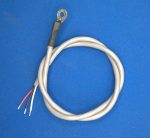
Revolutionizing Temperature Sensing and Voltage Monitoring In the fast-paced world of technology, where precision and reliability are paramount, our new ThermiVolt NTC Probe with temperature sensing and voltage monitoring stands out as a pioneer in dual-function sensing. These innovative probes seamlessly integrate temperature sensing and voltage monitoring, providing unparalleled accuracy and safety for a myriad of applications. How ThermiVolt NTC Probes Work: A Fusion of Expertise Temperature Sensing with Precision … Continue Reading
Electric Vehicles: Thermistors and Battery Management Systems

As the automotive industry rapidly shifts towards sustainability and environmental consciousness, electric vehicles (EVs) emerge as the forefront of this transformation. They promise reduced emissions and enhanced energy efficiency, redefining transportation. While battery technology and electric motors often steal the spotlight, the thermistor plays a vital role in the EV ecosystem. Let’s delve into the importance of thermistors in electric vehicles and understand why they are poised to remain indispensable … Continue Reading
Sensor Selection: The Advantages of NTC Temperature Sensors
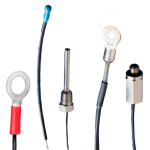
In our interconnected world, sensors have become vital tools that drive technology and innovation. They act as the eyes and ears of countless devices, enhancing our convenience and efficiency. NTC (Negative Temperature Coefficient) temperature sensors, in particular, excel at accurately measuring temperature. In this blog post, we will explore sensors, how they operate, and why NTC’s are an excellent choice for various applications. Understanding Sensors Sensors are instruments that detect … Continue Reading
Ametherm’s Guide To Kinked Leads

Ametherm is a trusted name in the field of inrush current limiting thermistors, providing solutions for a wide range of applications. To help you choose the right inrush thermistor for your specific needs, Ametherm offers three different lead types. These leads are crucial for proper installation and can significantly impact the effectiveness of the thermistor in your circuit. No Kink, Straight Leads: No Dash When you come across an Ametherm … Continue Reading
PTC Inrush Current Limiters: Advantages and Disadvantages
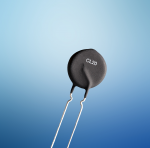
PTC’s Are Solutions to Inrush Current Inrush current, also known as startup or surge current, occurs when an electrical device is switched on, and it can exceed the device’s typical operating current significantly. This abrupt surge can strain the components of the circuit and can result in premature failure. Positive Temperature Coefficient devices have emerged as effective solutions for controlling inrush current in various applications. In this article, we will … Continue Reading
Inrush Current Limiting: PTC, NTC, or Active Circuits
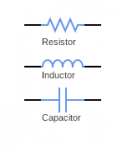
Inrush current limiting is vital to safeguard equipment and enhance its lifespan. NTC and PTC thermistors for inrush current reduction offer benefits like simplicity and cost-effectiveness, but sometimes, an active circuit is a more suitable choice. Comparing NTC, PTC Thermistors, and Active Circuits for Inrush Current Limiting Thermistors are temperature-sensitive resistors that precisely change resistance in proportion to temperature changes. NTC thermistors lower resistance as temperature rises, providing additional series … Continue Reading
Why NTC Thermistors In Series Beats Parallel
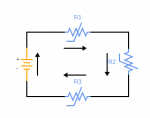
Connecting in Series – Recommended When you connect NTC thermistors in series for inrush current control, you gain several important benefits. Most importantly, the energy is distributed across all the units evenly, which extends the life of both your application and it’s components. Need a Refresher on What a Thermistor is? Click Here. Furthermore, another benefit of connecting NTC Thermistors In Series is that in doing so, it raises their … Continue Reading
Select the Right Inrush Current Limiter
Inrush Current Limiters protect electrical equipment from overheating at switch-on due to the surge of input voltage from the power source. Selecting the right Inrush Current Limiter is important. For example, switching power supplies, DC motors, and lighting ballasts can develop extremely high peak inrush current at turn-on unless you implement inrush current protection. Because inrush current equals the maximum instantaneous surge of incoming current from a power source, it … Continue Reading
Ametherm’s Temperature Sensor and Inrush Current Limiter Part Numbers Decoded

From the creation of the first inrush current limiter series, back in 1994, Ametherm knew that having logic behind the series naming convention would be important. Not only for organizational means but also to easily identify the components of the inrush current limiters and NTC thermistor temperature sensors. Both product lines, the inrush current limiters and NTC thermistor temperature sensors, have stringent guidelines created to get the most accurate description … Continue Reading
Ametherm to Showcase Leading Inrush Current Limiters and NTC Sensing Thermistors at APEC 2018
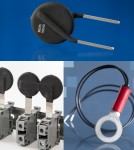
Ametherm announced its product lineup for the Applied Power Electronics Conference and Exposition (APEC) 2018. The company will be showcasing a wide range of its leading NTC and PTC inrush current limiters for reliable circuit protection and NTC thermistor sensors for high-accuracy temperature compensation and measurement. Featured inrush current limiters at APEC 2018 will include the company’s MS35 series of rugged NTC thermistors. Perfect for applications such as wind turbines, … Continue Reading
Thermistor Temperature Sensor Blog Archive
Thermistor Sensor Blog Archive The thermistor sensor blog archive contains articles relating to temperature measurement, compensation, and control.
Inrush Current Blog Archive
Inrush Current Blog Archive The inrush current blog archive contains articles relating to inrush current, it’s causes, cures, and prevention. Inrush Current Limiting



